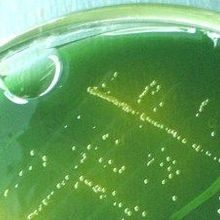Login
Subscribe404
Not Found
Is this what you were looking for?
tag organic microbiology culture

Engineering the Microbiome: CRISPR Leads the Way
Mariella Bodemeier Loayza Careaga, PhD | Mar 15, 2024 | 10+ min read
Scientists have genetically modified isolated microbes for decades. Now, using CRISPR, they intend to target entire microbiomes.

In Vitro Malaria Sporozoite Production May Lead to Cheaper Vaccines
Katherine Irving | Jan 20, 2023 | 4 min read
A method for culturing the infectious stage of the Plasmodium lifecycle could increase malaria vaccine production efficiency by tenfold, study authors say.

Opinion: A Dog Has Caught Monkeypox from One of Its Owners, Highlighting Risk of the Virus Infecting Pets and Wild Animals
Amy Macneill, The Conversation | Aug 19, 2022 | 5 min read
The monkeypox virus can easily spread between humans and animals. A veterinary virologist explains how the virus could go from people to wild animals in the US—and why that could be a problem.

Out, Damned Mycoplasma!
Kelly Rae Chi | Dec 1, 2013 | 8 min read
Pointers for keeping your cell cultures free of mycoplasma contamination

Microbes Responsible for Stealing Aquarium Medicine
Amanda Heidt | Feb 1, 2022 | 6 min read
Researchers discover that bacteria break down medicinal compounds for their nitrogen, solving a mystery that has vexed aquatic veterinarians for years.
Keeping Tabs on Cultured Cells
Lissa Harris(lharris@the-scientist.com) | Mar 13, 2005 | 6 min read
THE CULTURE WITHIN:Photo courtesy of Drs. C.C. Uphoff and H.G. Drexler, DSMZ-German Collection of Microorganism and Cell Cultures, Braunschweig, GermanyHeLa cell line infected with Mycoplasma hyorhinis. Scanning electron micrograph of critical point-dried cell culture grown on cover slips. Note the loop- and rod-like mycoplasmas attached to the host cell membrane. Smaller web-like structures on the cell surface represent microvilli of the cell. Original magnification 3,000×.Mycoplasmas have

What’s the Deal with Bacterial Nanotubes?
Sruthi S. Balakrishnan | Jun 1, 2021 | 10+ min read
Several labs have reported the formation of bacterial nanotubes under different, often contrasting conditions. What are these structures and why are they so hard to reproduce?

Dethroning E. coli?
Alison F. Takemura | Jun 23, 2016 | 1 min read
Some scientists hope to replace microbiology’s workhorse bacterium with fast-growing Vibrio natriegens.

Competition and Cooperation of Cheese Rind Microbes Exposed
Ashley Yeager | Jan 1, 2019 | 4 min read
Transposon mutagenesis give scientists a rare look at the most important interactions within microbial communities.

Bacteria Harbor Geometric “Organelles”
Amber Dance | Dec 1, 2018 | 10+ min read
Microbes, traditionally thought to lack organelles, get a metabolic boost from geometric compartments that act as cauldrons for chemical reactions. Bioengineers are eager to harness the compartments for their own purposes.